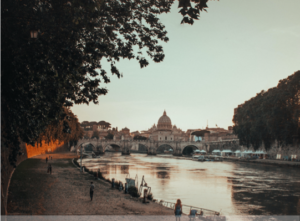
Di Claudia Mosca, aspirante autrice e scrittrice freelance
La politica italiana è segnata dalla presenza di importanti figure, tutte caratterizzate da una forte personalità e capacità espressiva.
Oggi, scopriremo insieme i nomi di tre leader di spicco particolarmente conosciuti tra gli italiani; scopriremo la storia di tre persone che sono riuscite a sorprendere appieno l’Italia e gli italiani stessi.
Iniziamo subito!
1) Giorgia Meloni
La prima persona di cui parliamo è Giorgia Meloni, politica italiana nata nel 1977. Attualmente, Giorgia ricopre la carica di Presidente del Consiglio dei Ministri della Repubblica Italiana, ed è la prima donna nella storia d’Italia ad aver ottenuto questo ruolo.
É fondatrice del partito Fratelli d’Italia – insieme a Ignazio La Russa e Guido Crosetto – di cui è presidente dal marzo 2014. La sua personalità forte e decisa le ha permesso di arrivare lì dove nessun altro era ancora giunto, dimostrando una significativa forza di volontà. Il suo futuro è ancora tutto da scrivere, ma l’inizio è già abbastanza promettente.
2) Emma Bonino
Passiamo poi a Emma Bonino, una politica italiana nata nel 1948. Emma rientra tra le più importanti figure del radicalismo liberale italiano, paladina del femminismo e della parità dei diritti.
Nel corso della sua carriera, la Bonino ha ricoperto importanti cariche istituzionali, mettendo la propria intelligenza al servizio della politica. Dal 2008 al 2013 ha ricoperto la carica di vicepresidente del Senato della Repubblica; è stata membro del comitato esecutivo dell’International Crisis Group; delegata per l’Italia all’ONU per la moratoria sulla pena di morte e fondatrice dell’organizzazione internazionale Non c’è pace senza giustizia per l’abolizione delle mutilazioni genitali femminili.
3) Giuseppe Conte
Concludiamo con Giuseppe Conte, politico italiano nato nel 1964. Conte ha ricoperto la carica di Presidente del Consiglio dei Ministri dal 2008 fino al 2021, dimostrando le proprie abilità e conoscenze in materia politica/economica.
Dato il periodo di comando, il Presidente si è trovato a dover affrontare la difficile situazione del Covid-19, proponendo soluzioni rapide ed efficienti ad un problema più che complesso. La sua tenacia e la forza dimostrata in questa occasione hanno permesso agli italiani di continuare a sperare, andando avanti giorno dopo giorno.


 When it comes to attending college in the United States, there’s often extreme pressure for incoming students to conform to university norms and take on the culture and attitudes of those around them in the name of “belonging”. While these practices are understandable for a young individual making a seismic transition, as an Italian or Italian-American, that adjustment often comes at the expense of our cultural roots.
When it comes to attending college in the United States, there’s often extreme pressure for incoming students to conform to university norms and take on the culture and attitudes of those around them in the name of “belonging”. While these practices are understandable for a young individual making a seismic transition, as an Italian or Italian-American, that adjustment often comes at the expense of our cultural roots.